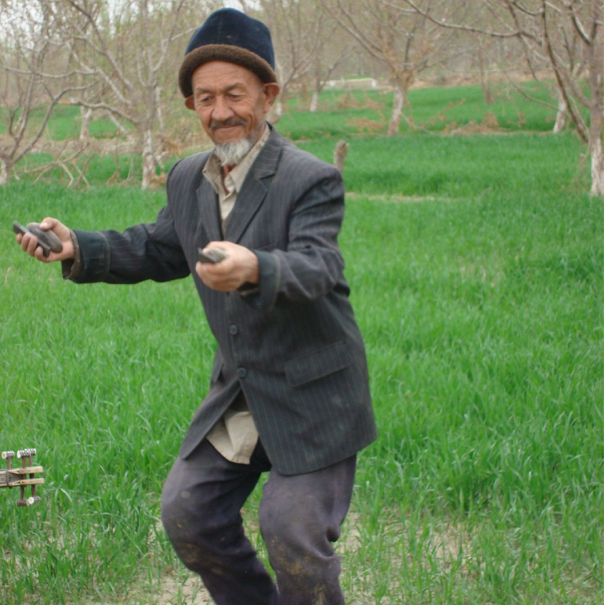tashi overview
 Tashi (pinyin: Tā shí) is a musical instrument used by the Uyghur and Uzbeks to strike each other. Uyghur means stone, according to which it claims to be Chak Chak. Popular throughout the Xinjiang Uygur Autonomous Region.
Tashi (pinyin: Tā shí) is a musical instrument used by the Uyghur and Uzbeks to strike each other. Uyghur means stone, according to which it claims to be Chak Chak. Popular throughout the Xinjiang Uygur Autonomous Region.It is made of natural stones. The stones are oblong or oblong, and the middle section is slightly thinner, generally 12 cm to 14 cm in length, 4 cm to 6 cm in width, and 1 cm to 1.2 cm in thickness. vice. It is better to use pebbles that are smooth and without edges and corners. The stone is hard and not easy to break.
When playing, the performer holds two pieces in each hand, with the palm facing up, respectively sandwiching it with the thumb and the other four fingers, and using both hands at the same time. By opening, closing and shaking the fingers to make the stones slap each other, you can play the rhythm of a flower cluster, and the pronunciation is short and crisp. It is used for folk art and singing and dancing accompaniment. It should be used to strengthen the rhythm of any high-spirited paragraph in the singing performance or the warm scene in the collective dance. In quyi, the performers often strike and sing, and in dance, male dancers play concurrently.
The Chinese Musical Instrument Museum of the Music Research Institute of the China Academy of Arts in Beijing has a pair of other stones from the Uyghur folk, 14 cm long, 3.8 cm wide and 1.2 cm thick, when Mr. Jian Qihua, a famous Chinese ethnomusicologist, went to Xinjiang to collect styles in 1959. brought back from the southern border.
- Pinyin:Tā shí
- semantics:Stone
- popular area:Xinjiang Uygur Autonomous Region
- category:Mutual sounding instrument
overview of other similar instruments
- sanyanxiao overview
- Daguangxian overview
- Leiqin overview
- hahao overview
- yandundagu overview
- Han Xiaozheng overview
- Fang Xiang overview
- guanzi overview
- zhuqin (Dao Qin) overview
- zhuiqin overview
- bangzi overview
- three-stringed piano overview
- Gehu overview
- xiao overview
- xiaokonghou overview
- Konghou overview
- Sheng overview
- suona overview
- hulusi overview
- gushao overview
 渝公网安备 50010702504639号
渝公网安备 50010702504639号